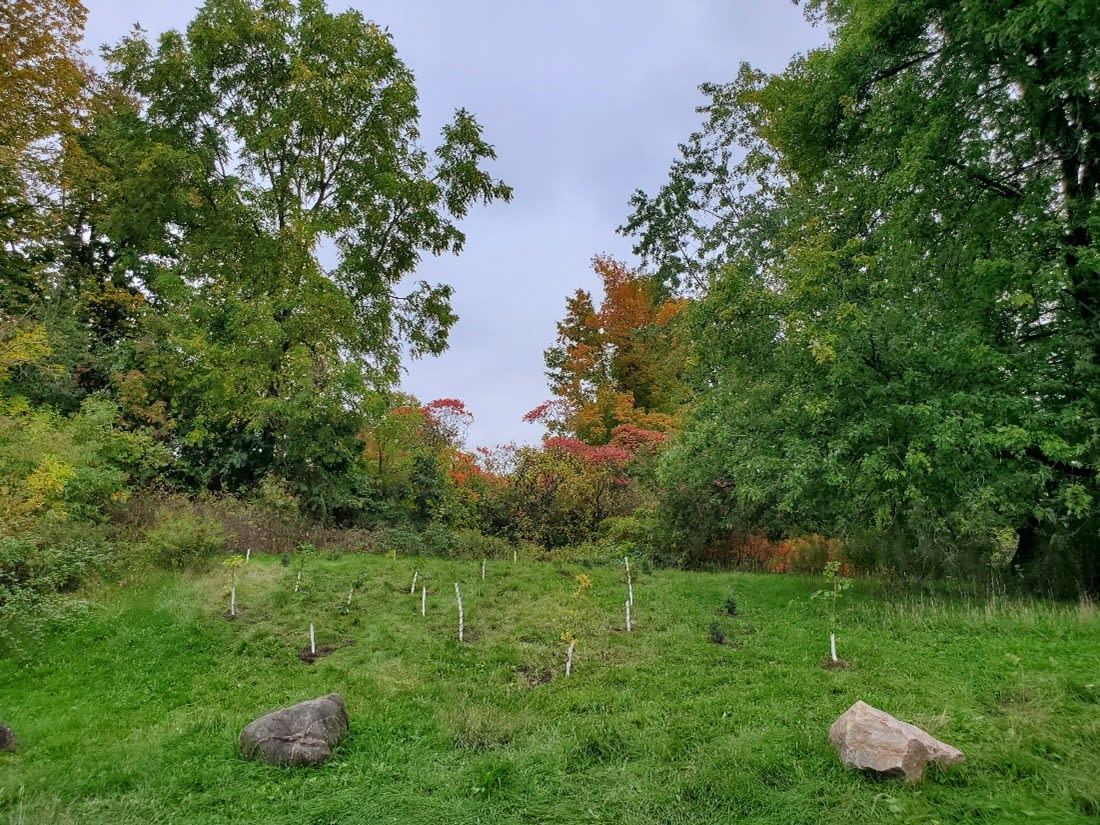Metrolinx continues to plant trees and build transit
Metrolinx works with regional conservation authorities to plant thousands of new trees.
Feb 4, 2023
Work is underway to bring a faster, greener, and more sustainable transit system to residents across the Greater Golden Horseshoe and beyond.
To build the transit system of the future, vegetation often needs to be pruned or removed to make room for new transit lines and improvements to existing GO lines.
Metrolinx's aim is to enhance the health of local ecosystems and increase the vegetation cover in the region to deliver greener transit options. As part of this strategy, Metrolinx has been working closely with various conservation authorities to fund and coordinate plantings across the region to offset these removals.
Since early 2020, over 27,000 trees and 42,000 shrubs have been planted across over 50 sites through the region.
Metrolinx caught up with Cory Byron, Forestry Programmer at Lower Simcoe Region Conservation Authority (LSRCA) at one of their planting sites in Newmarket to talk more about the success of the program.
Metrolinx’s Vegetation Guideline ensures more trees are planted than removed, ranging from one to 50 new trees, based on the size and location of the tree(s) being removed. On average, this works out to three or more new trees planted for every tree removed. This often goes beyond what is required by local regulations and by-laws.
The guideline is completely voluntary and ensures a greener region as the transit agency carries out the largest transit expansion in the region – a historic $75 billion of transit projects.
New plantings in Boyd Park Conservation Area, Vaughan. (TRCA Image)
Habitat Creation
Metrolinx is also working with its conservation partners to increase the habitats of several at-risk bats in the region.
So far, 22 rocket boxes (bat houses) have been installed with 100 more planned for installation through 2023 and 2024.
As part of this work, Metrolinx will work with the Toronto and Region Conservation Authority (TRCA) to plant vegetation suitable for bat roosting across a 3.9 hector area within the Claireville Conservation Area in Peel region next year.
A rocket box pictured in Scanlon Creek Conservation Area, Bradford (LSRCA Image).
Additionally, Metrolinx has partnered with the TRCA to reuse native tree materials as wildlife habitat. Metrolinx works with TRCA to identify and collect native tree materials and deliver them to natural areas.
Harvested tree limbs and branches are then used to create natural habitats for birds, small mammals, and reptiles to use as dens, nesting spots and food.
Just one more way the transit agency is being more sustainable, while delivering much needed transit to the region.
by Jocelyn Stenner Metrolinx capital communications senior advisor
